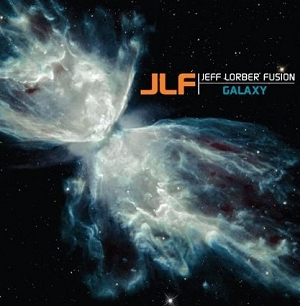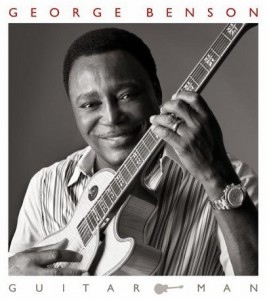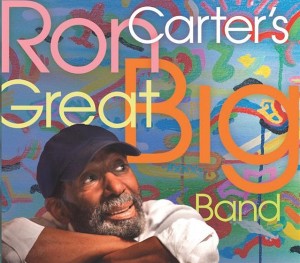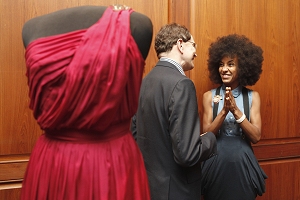Posted December 1st, 2011 at 7:10 pm (UTC+0)
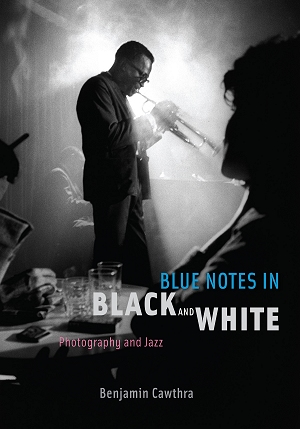
Book cover
Diaa Bekheet | Washington, DC – If you surf the Internet for articles about jazz and photography, you might find a few. But a recently-released book compiles accounts and rare expressive photos of jazz greats Louis Armstrong, Duke Ellington, Miles Davis, Sonny Rollins, Billie Holiday and others.
Blue Notes in Black and White: Photography and Jazz, by Benjamin Cawthra, charts the development of jazz photography from the swing era of the 1930s to the rise of Black Nationalism and the civil rights movement in the 1960s. It also introduces the readers to some great jazz photographers, including Herb Snitzer, Francis Wolff, Roy DeCarava, William Claxton, Gjon Mili, William Gottlieb, Herman Leonard and others.
I talked with the author, Benjamin Cawthra, who is Associate Professor of History at California State University, Fullerton, and Associate Director at the Center for Oral and Public History. He told me he worked on the book for more than 10 years to offer an account of the partnership between two of the 20th century’s innovative art forms: photography and jazz.
[audio:http://www.voanews.com/MediaAssets2/english/2011_12/bekheet_Intv_Benjamin_Cawthra_jazzbeat_nov2011.mp3]
It all started when Cawthra was working at a museum at St. Louis, Missouri and had the brainstorm of doing an exhibition on jazz great Miles Davis, a native son of St. Louis area.
“It seemed that he’d never taken a bad picture, and so many photographers had taken his pictures,” noted Cawthra who was struck by some extraordinary images that were part of the exhibition. “So, when I went to do my dissertation at Washington University at St. Louis I was just thinking: where did these really great photographs come from? Why would they taken? What impact, if any, did they have at the time they were taken? And how they become such classic, iconic images and photographs of jazz musicians?”
Blue Notes in Black and White: Photography and Jazz recounts more racism stories related to jazz greats, including Davis. Miles Davis was performing at a club in New York. He was taking a break to escort a “pretty white girl named Judy” to a Taxicab between sets. A white police officer told him to move along — to keep the sidewalk clear. Davis, who was famous at the time, explained to the situation to the officer, but it tuned into a scuffle.
“A second detective comes along and starts beating him on the head with a baton,” explained Cawthra. “So, the next image we see of Miles Davis is him with a blood-spattered jacket, a bloody scalp and being booked at police headquarters. And again here’s a moment where the social tension and the difficulty of race in America are impinging on the jazz image.”
Blue Notes in Black and White: Photography and Jazz also shows the links between diverse photographers, examining their common interest in jazz as a subject. In addition, the book sheds light on their “substantial differences” in terms of approach as jazz itself underwent stylistic changes and cultural repositioning against the backdrop of the modern civil rights movement.

Ben Cawthra - Courtesy Don Peterson
Cawthra opens his book by looking at a powerful moment in 1960 when African-American jazz icon Louis Armstrong actually lets his guard down for a photographer named Herb Snitzer who was working for the jazz magazine Metronome. Armstrong was on a tour in the Northeastern United States with his All-Stars band. He was probably the most famous entertainer in America — maybe in the world — not named Charlie Chaplin in the 1920s and the 1930s, Cawthra explained.
“And yet as [photographer Ralph] Ellison suggests in his novel [Invisible man,] which was published in 1952, during that year Louis Armstrong – the real Louis Armstrong – was not really visible, he’s invisible because he has to play a role,’ the book author elaborated. He has to smile, he has to play a particular role that’s expected of him from his audience, especially his white audience and that just the way it was,” the author said.
“He was on tour with Armstrong in Connecticut. He took some extraordinary photographs of Louis Armstrong in which he’s not smiling, he’s not the gregarious entertainer that we think of, and he came to find out later that Armstrong had been denied the use of restroom facilities on the tour,” said Cawthra. “That was really affecting his mood, and that’s perhaps why he has this look on his face.”
In Blue Notes in Black and White: Photography and Jazz, Cawthra writes: “Surely Armstrong was acutely aware of his own invisibility – his second-class status as a man – during those early years. After all in ‘Black and Blue’ he sings ‘I’m White Inside,’ which Ellison may have read not as a sellout but as the strongest assertion of equality a black singer could have made in the early 1930s.”
The book has some of the most extraordinary and famous photos, which didn’t receive much play in the press between the 1940s and 1960s, nor in some of the leading jazz magazines of the time. Among them are photos of Louis Armstrong, Duke Ellington, Dizzy Gillespie, Charlie Parker and Billie Holiday, which in 1996 became a U.S. postage stamp.
Profile songs by Louis Armstrong and Duke Ellington on my Jazz Club USA & Down Memory Lane in 1999, follow Arabic introduction.
[audio:http://www.voanews.com/MediaAssets2/english/2011_12/Louis_Armstrong_Duke_Ellington.mp3]
For more on jazz music, listen to VOA’s Jazz America



